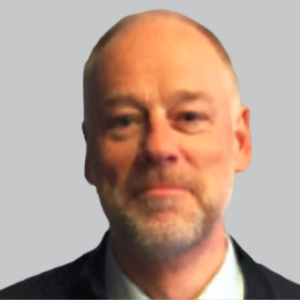Tardive Dyskinesia Negatively Impacts Professional and Social Interactions
A first-of-its-kind study has explored the social and professional impacts that tardive dyskinesia-related movements can have on individuals with the condition, as well outward perceptions.
Dieter Schultewolter, MD, Global Medical Affairs Lead, Central Nervous System, Teva

Deiter Schultewolter, MD
Recently, new data on the treatment of tardive dyskinesia suggest that the impact of tardive dyskinesia extends beyond health-related quality of life, ultimately negatively affecting patients across multiple domains.
Presented at the 32nd Annual Pysch Congress in San Diego, California, the data revealed that, in addition to experiencing embarrassment, isolation, and unwanted attention, individuals with tardive dyskinesia are often on the receiving end of professional and social challenges as well.1 This study, according to Teva, is the first of its kind to attempt to quantify the stigma that patients face.
Ultimately, among 800 survey respondents who were split into control and test groups and randomized to interview actors either with or without validated tardive dyskinesia movements, 34.7% fewer agreed that those with tardive movements were suitable for client-facing jobs (P <.001). Additionally, 25% and 27.3% fewer agreed they would be interested in continuing to speak with the person and meet them for coffee, respectively (P <.001).
The proportions of those rating the actor as interesting and or as being interested in friendship with them were 18.8% and 16.5% lower, respectively, in the test group than in the control group (P <.001). In order to ascertain more about the social consequences tardive can have on patients, NeurologyLive spoke with Dieter Schultewolter, MD, Global Medical Affairs Lead, Central Nervous System, Teva, about the findings.
NeurologyLive: What should the key takeaway be for the prescribing community from these data? How does this add to the long-term understanding of tardive dyskinesia’s impact on this patient population?
Dieter Schultewolter, MD: Although there is increasing awareness of the impact of tardive dyskinesia on health-related quality of life, the social and emotional impacts of tardive dyskinesia movements have not been thoroughly examined.2-5 People with tardive dyskinesia have described its social and emotional effects (embarrassment, social isolation, and unwanted attention) as being among the most debilitating aspects of living with the condition.6-8
This study evaluated the professional and social impacts of orofacial symptoms on individuals with tardive dyskinesia. The study found that individuals who exhibit oral facial dyskinesia may face social stigma and be discriminated against by the public in a variety of settings including professional, romantic/personal and social. The results of this experimental research posit that the burden of tardive dyskinesia has a significant social stigma component. This is the largest and the most comprehensive study to quantify that abnormal movements of tardive dyskinesia lead to social and professional disadvantage.
These results support the need for therapies that mitigate tardive dyskinesia symptoms while allowing patients to manage their underlying psychiatric disorders.
Did any findings stand out to you as particularly troublesome or concerning?
The results suggest that people exhibiting orofacial tardive dyskinesia movements are less likely to advance in job interviews and to be considered as a potential romantic partner or new friend than people without such movements.
REFERENCES
1. Teva to Present New Data on AUSTEDO® (deutetrabenazine) Tablets at Psych Congress 2019 [press release]. Jerusalem, Israel, and Parsippany, NJ: Teva Pharmaceuticals; Published October 2, 2019. businesswire.com/news/home/20191002005195/en/Teva-Present-New-Data-AUSTEDO%C2%AE-deutetrabenazine-Tablets. Accessed October 10, 2019.
2. Caroff SN et al. J Neurol Sci. 2018;389:4—9.
3. Yassa R. Acta Psychiatr Scand. 1989;80:64—67.
4. Browne S et al. Acta Psychiatr Scand. 1996;94:118—124.
5. Strassnig M et al. CNS Spectr. 2018;23:370—377.
6. Caroff SN et al. J Neurol Sci. 2018;389:4—9.
7. Bergman H et al. Health Technol Assess. 2017;21:1—218.
8. Farber R et al. Presented at: Psych Congress Annual Meeting; September 16—19, 2017; New Orleans, LA.
2 Commerce Drive
Cranbury, NJ 08512
All rights reserved.